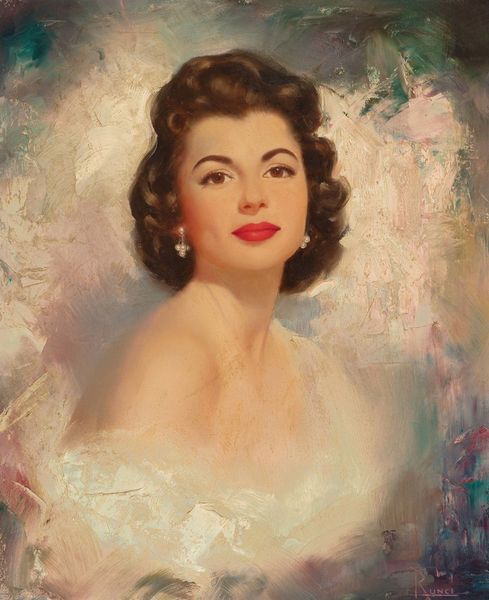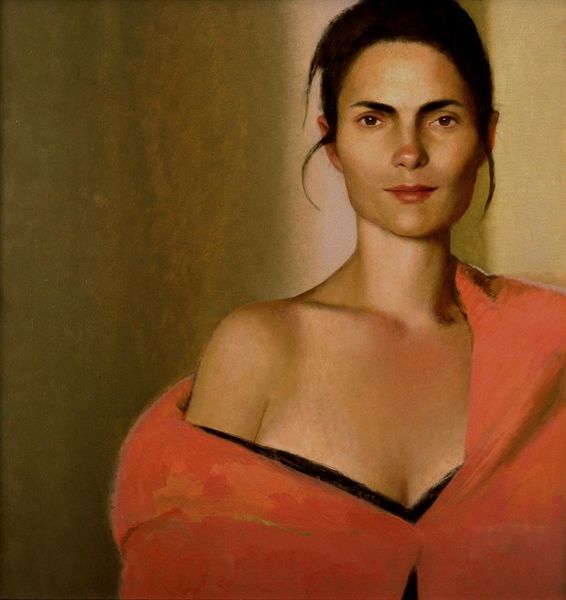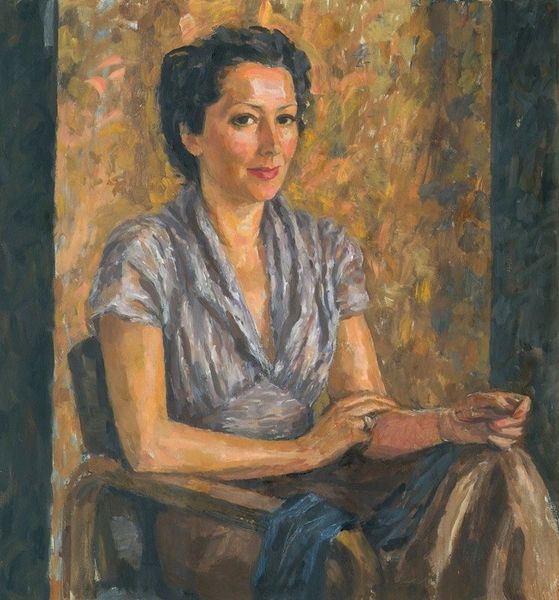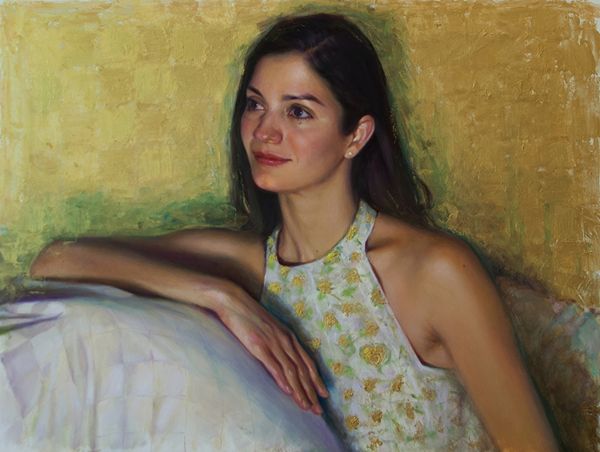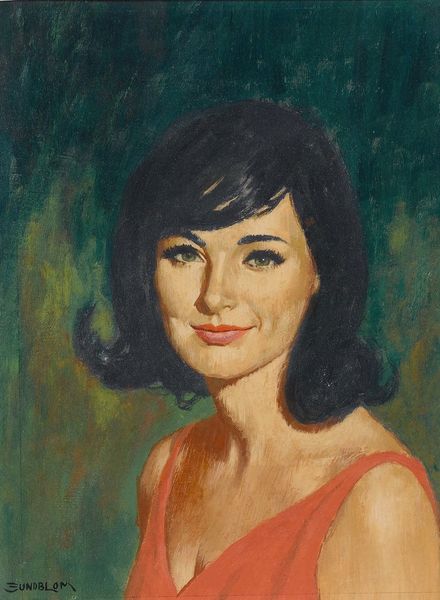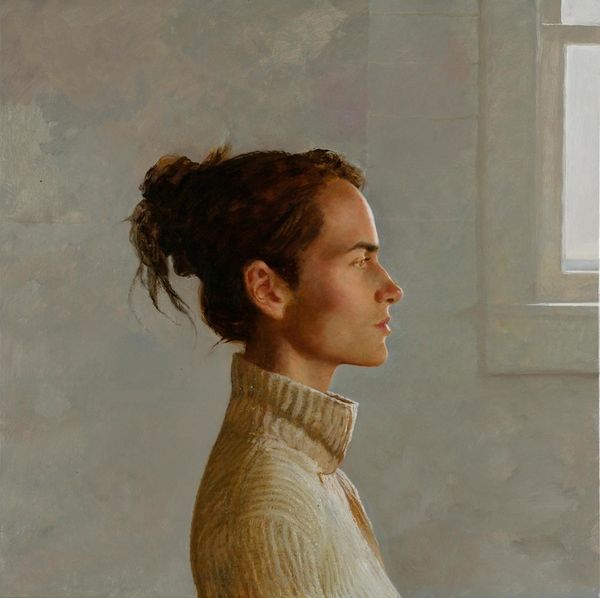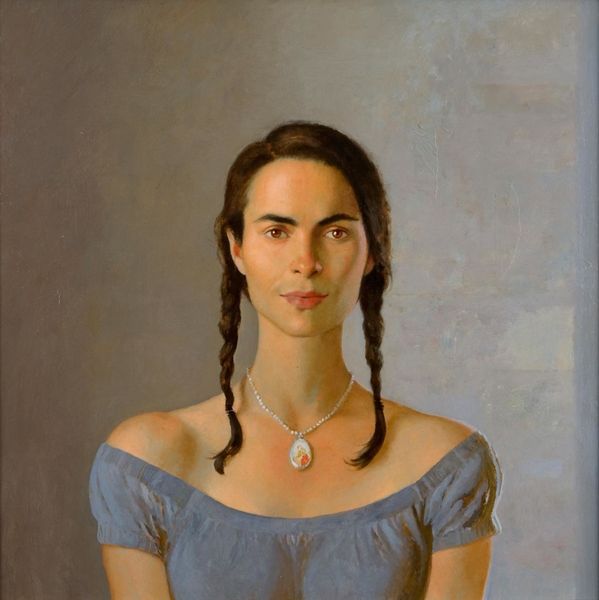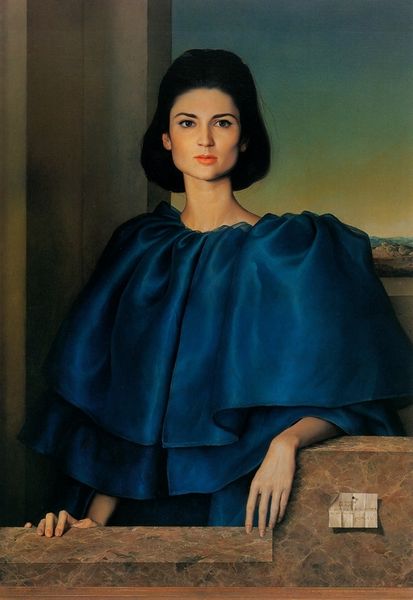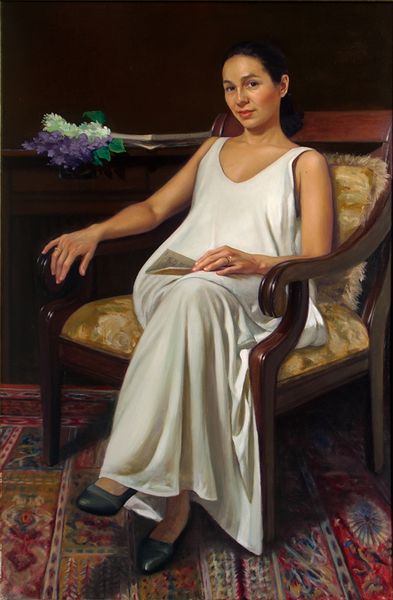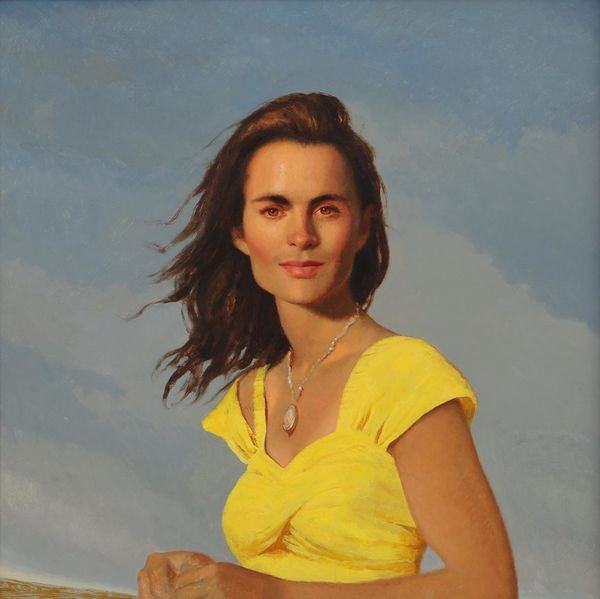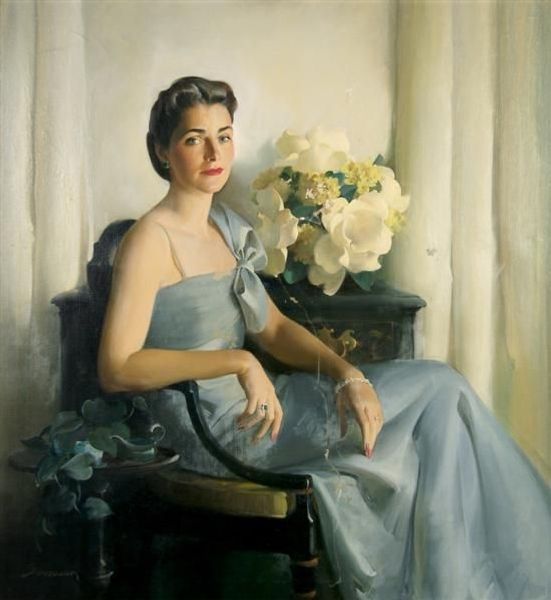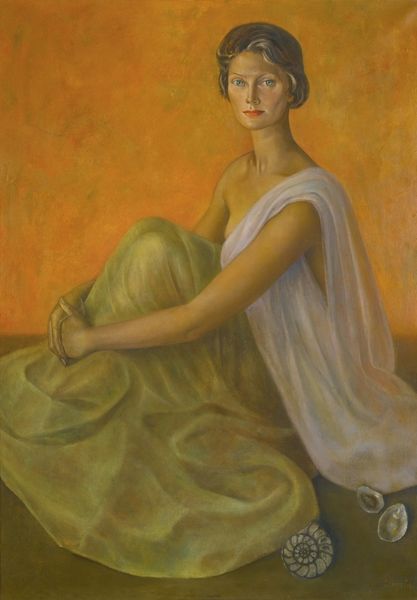
painting, oil-paint
#
portrait
#
figurative
#
painting
#
oil-paint
#
figuration
#
genre-painting
#
academic-art
#
modernism
Copyright: Modern Artists: Artvee
Curator: Here we have Norman Rockwell's "Portrait of Patricia Mernone" from 1969. It’s an oil painting. What’s your first impression? Editor: It strikes me as remarkably poised, even restrained. There’s a formality in the subject's posture, a stillness. Yet, something in her gaze suggests an undercurrent of...something unsaid. Curator: Rockwell often imbues his subjects with subtle narrative cues. The slightly off-center pose, for instance, is classic—conveying naturalism within a constructed formality, which adds to her expression. Editor: The period detail, too, anchors the piece—the hairstyle, the dress pattern, even the particular shade of yellow in the background. The color speaks to the changing styles, particularly around youth and fashion in the late 60's, after youth movements had really taken hold and popular culture was focused on catering to new norms in gender, identity, and sexuality. Curator: Indeed, Rockwell's meticulous rendering also contributes to the painting's effect. Consider the symbolic importance of her clothing. That Paisley design references ancient designs but feels simultaneously up-to-date in 1969! Rockwell's inclusion is unlikely a coincidence. Editor: But there's an almost uncomfortable level of conformity present. While Rockwell's intentions might have been to showcase individual beauty or convey symbolic values via material culture, does it risk glorifying assimilation? The historical moment this work came into being felt much more ambivalent. Curator: Perhaps. Yet Rockwell often plays with those tensions. Her steady gaze, though seemingly compliant, possesses an individual agency and thoughtfulness that challenges that simplicity. I think the strength and dignity of that look outweigh a celebration of conventional norms. Editor: It is, without question, a testament to her resolve to endure. In conclusion, the beauty lies precisely in this intersection of art historical traditions and those social implications. Curator: Ultimately, Rockwell offers us a lens through which to examine shifting cultural dynamics, recorded through the symbolism of one individual's representation.
Comments
No comments
Be the first to comment and join the conversation on the ultimate creative platform.
